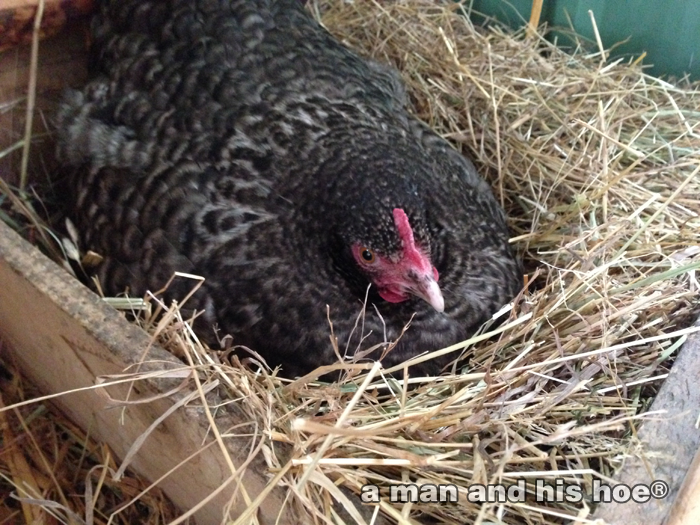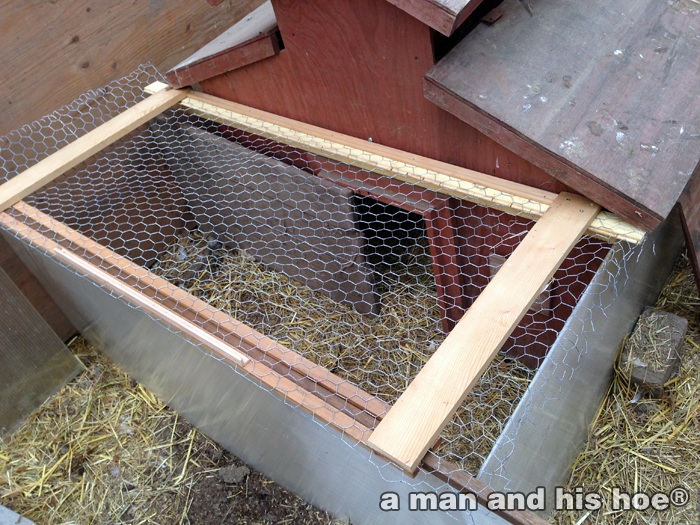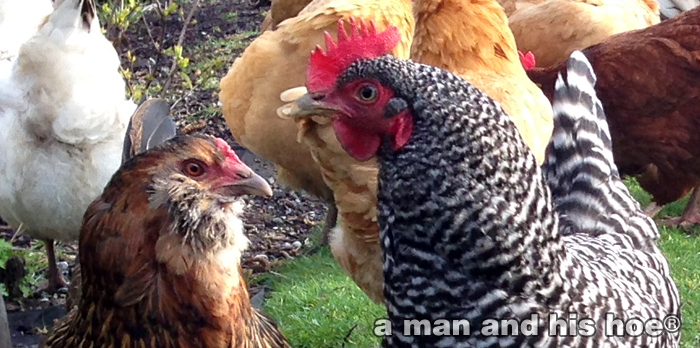Your cart is currently empty!
Month: March 2014
-
Sometimes the Best Laid Plans Don’t

Sometimes the best laid plans don’t work. After building an incubation suite for the hen who went broody, I tried moving her into the suite Saturday night (March 29), but Sunday morning, she wanted out. She was determined to get back to her original brooding site.Once she was on her original brooding site, I placed ten eggs for her to hatch. The due date is April 20, and we’ll see how she does. Through the process I did find out that this is one tough hen. She won’t have a problem keeping other hens from trying to use her nest while she broods. This hen can peck!

-
Chick Adventure in the Wild
[wpvideo 78Q3VVXI]
What a morning for these five day old chicks. When their mother tries to lure them through a stream, they panic. The water is too deep for them. Separated from her, the chicks chirp loudly, begging her to come back. One even falls into the stream, and valiantly struggles up the steep bank. Others clamber over a mountain of a bush to reach their mother.After the wild and terrifying adventure for these chicks, they get a well deserved rest under their mother’s warm feathers.
I laugh when I read of those raising chicks in broilers talk about enrichment programs for their chicks. These enrichment programs consist of providing bales of hay, perches, and objects for the chicks to peck. They certainly don’t include outdoor adventures such as fording streams or trying to keep up with Mother as she forages through rangeland.
-
Cherry Blossoms are for Eating


What does a cherry tree full of blossoms look like to a chicken? Manna from heaven? The taste of things to come? Each spring, the chickens enjoy a feast of cherry blossoms. Did the chicken you buy get a chance to taste cherry blossoms? Do the hens which lay the eggs you buy, get to pick fresh fallen cherry blossoms?
[wpvideo dv8XQcha] -
All It Takes Is a Little Sunshine

All it takes is a little sunshine to make the cherry blossoms explode. What a pleasant surprise after many days of clouds and rain.


All it takes is a little sunshine to bring out all the chickens. And what are they up to? Are they just out enjoying the late afternoon sun? Are they looking for some treats? Out showing off their Sunday best?

-
Why Chicks Deserve a Mother – Reason #2
[wpvideo 2kDUb7PB]
Another reason chicks deserve a mother is that with a mother, they get to go outside at a very early age. These chicks are just four days old and they are having the time of their lives scratching around outdoors with their mother. From now on, they will be spending most of their days outdoors. Farmers who raise their chicks without mothers would never consider putting such young chicks out to pasture. Most wait until the chicks are three, four or five weeks old before putting them outside. For example:- Green Legacy Farms waits until their chicks are four weeks old.
- Jericho Settlers Farm keeps them indoors for three weeks.
- Stony Brook Farm puts them out to pasture after two, three or four weeks depending on the time of year.
- Earth Action Mentor waits three weeks, though if the weather isn’t too cold, they will put them out earlier.
What these farms are doing is understandable. Without a mother to guard and provide warmth as needed, putting chicks outside after just four days would be cruel, if not a death sentence. But with a mother watching over the chicks, going outdoors at just four days old, even in cool weather, is no problem. The earliest I’ve seen a hen take her chicks outdoors is at day two, and the latest at 14 days. Most of the hens have their chicks running around outdoors within a week of hatching.